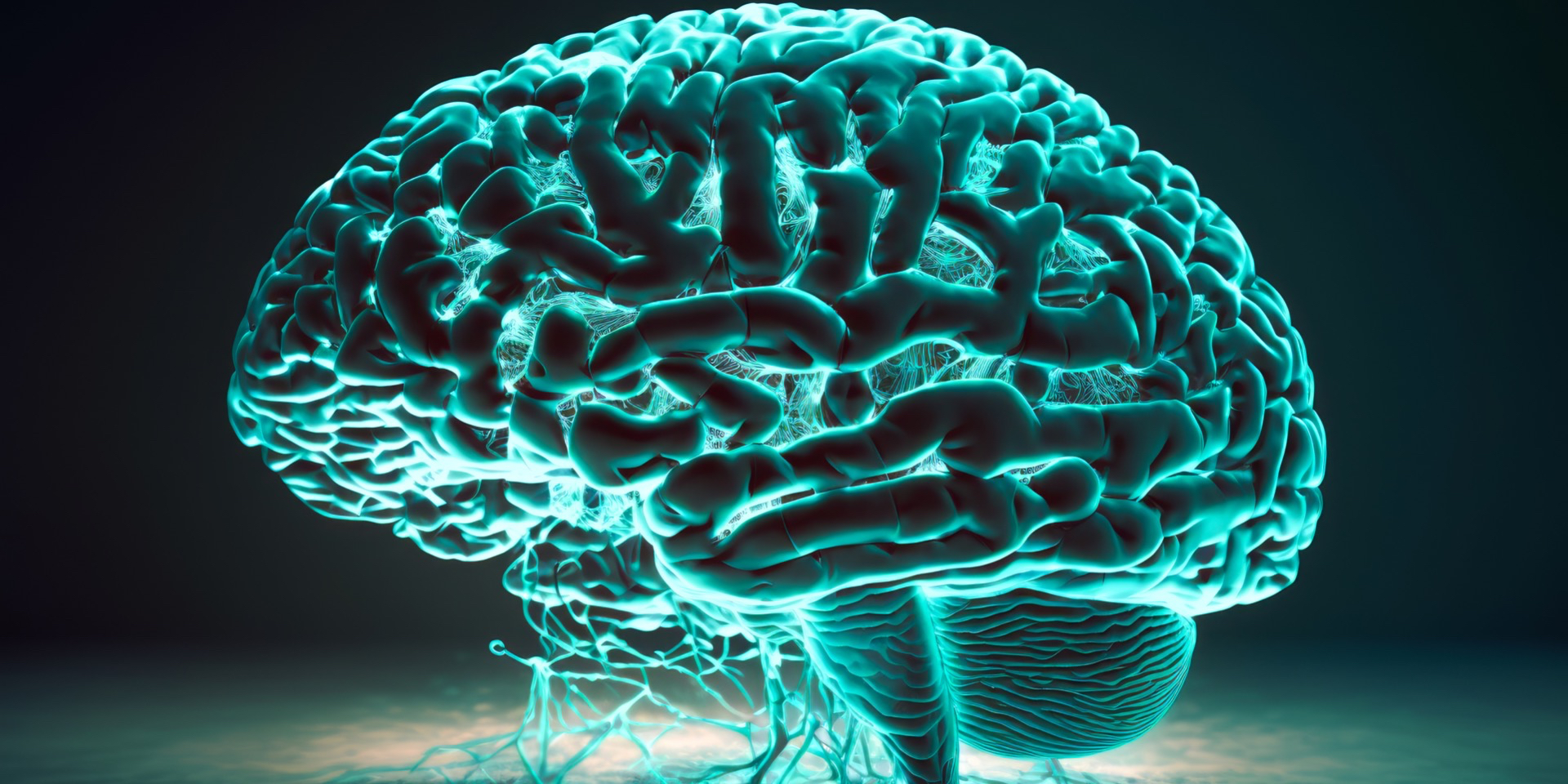The first time he saw a living human brain, neurosurgeon Sanjay Gupta says it became “a powerful and life-changing experience.”
The brain is not “grey matter.” Gupta describes it as “pinkish with whitish yellow patches and large blood vessels coursing on and through it. It has deep crevasses, known as sulci and mountainous peaks, known as gyri. Deep fissures separate the brain into the various lobes in a surprisingly consistent way.”
And, in case you were wondering, “During an operation, the brain pulsates gently out of the skull’s borders and looks very much alive. Consistency wise, it is not so much rubbery as squishy, more like gelatin. It has always amazed me how fragile the brain is despite its function and versatility. Once you see the brain, you very much want to protect and take care of it.”[1]
So, how do we take care of our brain? How do we go about building a better brain? Author of The Aging Brain, Dr Timothy Jennings, keeps it simple: “A healthy brain requires a healthy body.”
Why? “Because the primary purpose of every organ system of the body is to serve the brain: the lungs breathe and the heart beats in order to provide oxygen and nutrients to the brain. The legs move the brain from place to place while the arms allow the brain to interact with the world. The primary function of our eyes and ears is to provide input data to the brain.”[2]

The brain is central and while the body may serve the brain, the brain also controls the body. There’s a link between the two with each impacting on the other.
“Everything we do—what we think, what we say, how we behave, and what habits we develop—springs from the complex biological processes of the brain,” says human behaviour researcher Peter Hollins.
For instance, “People with better memories tend to have larger hippocampi, and singers tend to process the act of imitation better than those who cannot sing. All of who we are comes from the unique way our individual brains have developed.”
He talks about neuroplasticity, brain plasticity and the ability of neural networks in the brain to change “in response to the stimuli it encounters. You can imagine this to be the cornerstone of learning, memory, self-discipline, habits and even motivation.
“With neuroplasticity, you set your own potential. Without it, you are destined to have a brain set in stone. The ability of our brain to change and adapt is truly what makes us unique as a species.”[3]
We can learn new skills. We can make decisions. We can change our minds.
Doing what we know
Perhaps the place to begin to help our brains is to get serious about creating the healthiest brain we can. When I interviewed Victor Adekola Ojo, a psychogeriatrician (a person who deals with mental illness in older people), he went back to basics and said, “We already do a lot of the things that can keep our brains healthy. What’s often missing is intentionality and regularly taking the time to do what helps.”[4]
That’s a warning.
Gupta says, “When people ask me what’s the single most important thing they can do to enhance their brain’s function and resiliency to disease, I answer with one word: exercise—as in move more and keep a regular physical fitness routine. . . . Fitness could well be the most important ingredient to living as long as possible, despite all the other risk factors you bear—age and genetics included.”[5]
And for himself, he always has running shoes, swimsuit and goggles handy wherever he is, along with resistance bands. He follows the advice of his chair of neurosurgery and does 100 push-ups a day. One of the secrets he says is to make exercise accessible—he keeps weights in his bedroom, he has a door-frame pull-up bar at home and in his office (“pull-ups are a great way to build your back muscles and strengthen your core”).[6]
I suspect you and I both know the importance of exercise, but why do so few of us exercise—let alone exercise regularly?
Arianna Huffington emphasises the importance of sleep in her book The Sleep Revolution, saying that “sleep deprivation is linked with increased risks of diabetes, heart attack, stroke, cancer, obesity, and Alzheimer’s disease. . . . Sleep is so important for our health and wellbeing that we can’t afford not to make it a priority.”[7] Adequate, good sleep helps our brains.
See “10 ways to love your brain” below for a list of things we can do to help our brains.
Use your brain
There really is a sense of use it or lose it about your brain. Simply put, using your brain helps it grow. Research by University College in London checked out the brains of trainee taxi drivers who passed what is known as the “knowledge” test. The test is to learn routes across the city’s 25,000 streets and to thousands of places of interest. What they discovered was that “they had a greater volume of grey matter in their posterior hippocampus—the nerve cells in the brain where processing takes place—than when they started.”
“The brain had made room for a mental representation of London in their heads.” In commenting on the study, Professor Eleanor Maguire said, “The human brain remains ‘plastic’ even in adult life, allowing it to adapt when we learn new tasks.”
And if you want to really give your brain some exercise, learn a new language—or two. One study found that speaking more than one language better prepares the brain to take on other challenging tasks.
A healthy brain is mostly found in a healthy body, is often stretched, regularly used and challenged.
“It’s never too late or too early to incorporate healthy habits.” That’s the message from the Alzheimer’s Association as they list 10 ways individuals can reduce the risk of cognitive decline by adopting and combining certain lifestyle habits:
1. Break a sweat
Engage in regular cardiovascular exercise that elevates your heart rate and increases blood flow to the brain and body. Several studies have found an association between physical activity and reduced risk of cognitive decline.
2. Hit the books
Formal education in any stage of life will help reduce your risk of cognitive decline and dementia. You could take a class at a local college, community centre or online.
3. Butt out
Evidence shows that smoking increases risk of cognitive decline. Quitting can reduce that risk to levels comparable to those who have not smoked.
4. Follow your heart
Evidence shows that risk factors for cardiovascular disease and stroke—obesity, high blood pressure and diabetes—negatively impact your cognitive health. Take care of your heart and your brain might just follow.
5. Heads up!
Brain injury can raise your risk of cognitive decline and dementia. Wear a seat belt, use a helmet when playing contact sports or riding a bike, and take steps to prevent falls.
6. Fuel up right
Eat a healthy and balanced diet lower in fat and higher in vegetables and fruit to help reduce the risk of cognitive decline. Research on diet and cognitive function is limited but certain diets, including Mediterranean and Mediterranean-DASH (Dietary Approaches to Stop Hypertension), may contribute to risk reduction.
7. Catch some Zs
Not getting enough sleep due to conditions like insomnia or sleep apnea may result in problems with memory and thinking.
8. Take care of your mental health
Some studies link a history of depression with increased risk of cognitive decline, so seek medical treatment if you have symptoms of depression, anxiety or other mental health concerns. Also, try to manage stress.
9. Buddy up
Staying socially engaged may support brain health. Pursue social activities that are meaningful to you. Find ways to be part of your local community—if you love animals, consider volunteering at a local shelter. If you enjoy singing, join a local choir or help at an after-school program. Or, just share activities with friends and family.
10. Challenge yourself
Challenge and activate your mind. Build a piece of furniture. Complete a jigsaw puzzle. Do something artistic. Play games, such as bridge, that make you think strategically. Challenging your mind may have short and long-term benefits for your brain.
Bruce Manners is an author, retired pastor and former editor of the Australia/New Zealand edition of Signs of the Times, based in Lilydale, Victoria.


















